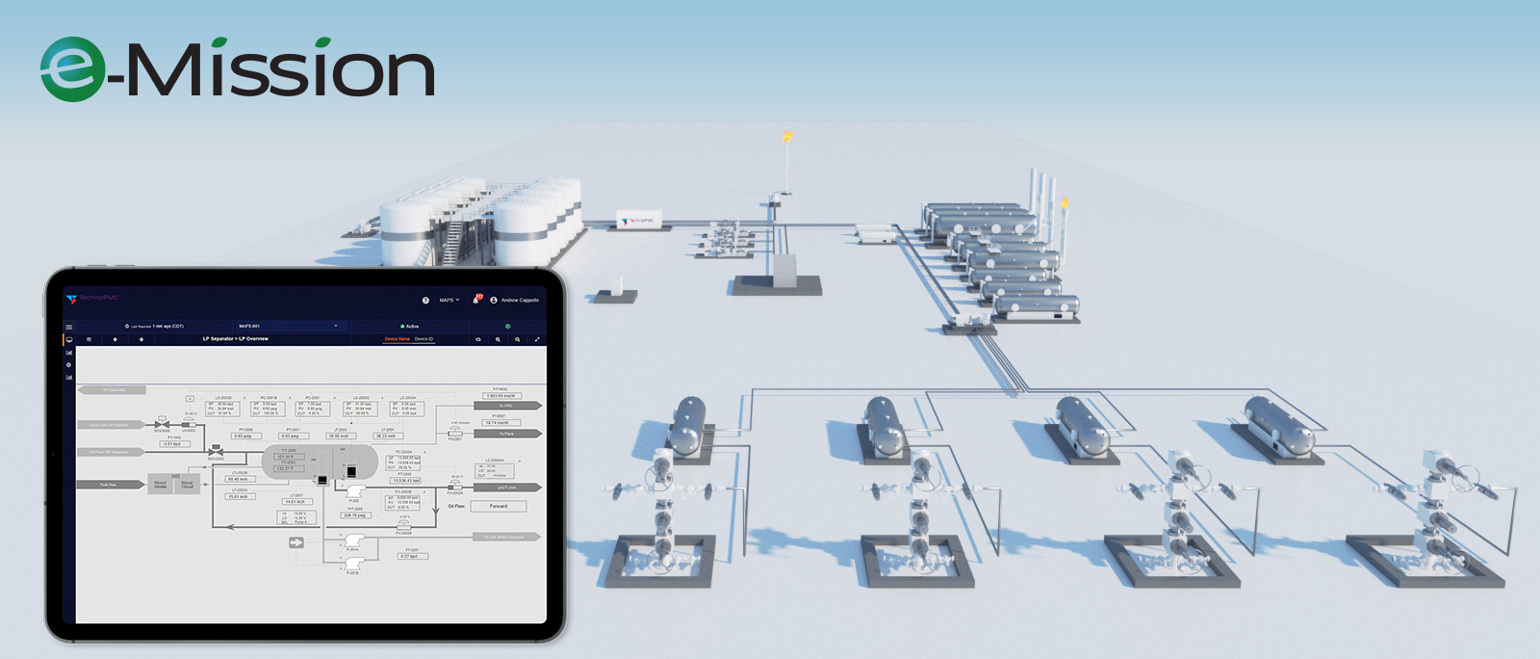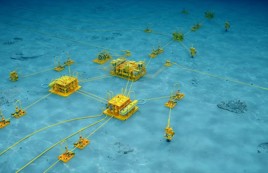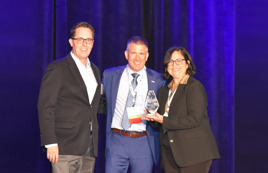News - Press Release

Optimization and automation combine in TechnipFMC’s E-Mission™, our controls system that reduces flaring and increases oil production at onshore unconventional production facilities.
The technology cuts greenhouse gas emissions and increases production by carefully managing temperature and pressure in real-time – and it can be quickly retrofitted to existing surface equipment to deliver rapid results.
Here, Laura Schilling, Senior Vice President Surface – West, and Isabel Chan Senior Manager, Onshore Production, discuss E-Mission™ and its benefits.
-

How have energy industry attitudes to methane flaring changed? What are the benefits of reducing flaring?
-
Laura Schilling (LS): In the US unconventionals market, methane flaring has not been uncommon during certain periods of a well’s engineering lifecycle and as operators build pipelines and production infrastructure to support their field development. During the last two years, however, investors and regulatory bodies have been driving operators to improve their carbon footprint. Many operators have recently adopted ambitious ESG targets, including a focus on environmental impact and carbon intensity. Flaring is a key contributor to methane emissions. By reducing flaring in existing and new facilities’ design, operators can take a big step in reducing emissions and also increasing production efficiency while reducing carbon intensity.
-

How does E-Mission™ cut flaring, and what insights does it offer its users?
-
Isabel Chan (IC): E-Mission™ combines information that many brownfield sites already measure – data about temperatures, pressures, etc – with our algorithms to determine where to optimize systems to reduce flaring. E-Mission™ evaluates what's coming in, and uses automation to adjust the system parameters to ensure operators get the best value and environmental outcomes. During a six-month trial, one customer cut CO2 equivalent emissions by 2,240 metric tons – that's the same amount generated by driving 5.6 million miles in an average US automobile. We were able to capture the gas that would have been flared and export it as sellable oil for the operator.
-

What safeguards are there to maintain safe operation without human intervention?
-
IC: Employees are out of the red zone but still in full control of the well site. E-Mission™ utilizes our User-Configurable Open System ( UCOS ) control system as its base, with all of the alarms and shutdown signals of a typical control system embedded there. Control resides in our Edge computing system, on a physical unit out in the field, so any interruptions in telecommunications connectivity won’t affect operations. If something were to go wrong when connectivity was down, automated shutdowns would ensure the site remains safe. The systems are linked to the cloud, where we have a learning and testing environment for software updates before they are pushed to the Edge. We and the operator also have real-time visibility of every parameter through our InsiteX app.
-

What differentiates E-Mission™ from other flare reduction technologies?
-
LS: E-Mission™ is the only solution right now with the real-time ability to monitor and calibrate controls to reduce flaring. Many operators have focused first on identifying the causes of emissions in their drilling, completion, and production activities then monitoring for trends. Most of what’s on the market is around methane detection and identification using sensor technologies so operators can make an elimination plan. We are able to provide the needed next step beyond methane identification. Our solution not only provides meaningful real-time data but gives the ability to make immediate adjustments in their production system to reduce gas and flaring in the process.
E-Mission™ is a holistic, automated solution. Through artificial intelligence and machine learning, our systems begin to recognize and anticipate each well’s unique patterns of production – all in a system that can be retrofitted on clients’ existing infrastructure.
-

How quickly can E-Mission™ be set up at an existing production facility? Is production disrupted?
-
IC: The system requires no additional instrumentation or equipment, and can provide all the data required. E-Mission™ can be implemented in a matter of hours. We collaborate to understand each customer’s needs for each individual site, then quickly and easily implement E-Mission™. Customers don't have to change their operating procedures – it runs seamlessly behind the scenes.
-

E-Mission™ is being offered in the onshore market, but are there plans to apply it in offshore settings, too?
-
LS: Our learnings in automation and remote operational optimization can be of benefit onshore or offshore. The next market we see further opportunities for E-Mission™ is the international onshore market. Oil and gas companies worldwide are making ESG and emissions commitments and having a technology they can retrofit to existing equipment to help achieve that is a real benefit.

Laura Schilling, Senior Vice President Surface – West

Isabel Chan, Senior Manager, Onshore Production
More news
-

News | March 18, 2024
Inside HISEP® – How TechnipFMC is taking dense gas separation and storage fully subsea
-

News | October 19, 2023
TechnipFMC wins NOIA ESG Excellence award
-

News | October 11, 2023
Offshore training for migrant women boosts inclusion and diversity